DinoPC i7-Osaurus Gaming PC Review
DinoPC i7-Osaurus Gaming PC
Is DinoPC's aptly-named i7-Osaurus a T-Rex or more of a fossil?
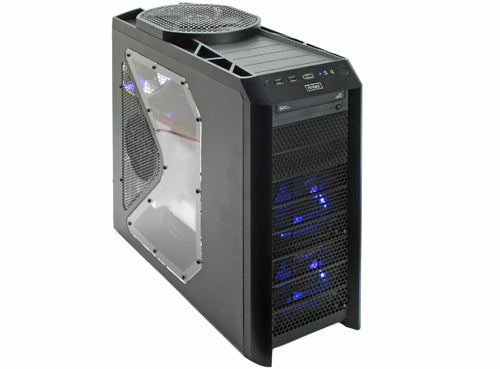
Verdict
Key Specifications
- Review Price: £999.95
We haven’t reviewed a system from DinoPC before, but the assembler has been around for a while and today we’re putting one of the company’s gaming PCs through its paces. Originally we were getting in another system toward the budget end between the £600 to £700 mark, but couldn’t resist what we were told would be one of the best systems under that magical one grand barrier, the i7-Osaurus Gaming PC. With a fast Core i7 CPU and Radeon HD 5870 graphics card it certainly has the potential on paper, so join us as we find out whether it lives up to its claims in practice.
As far as the case goes, the system is housed in the eminently-capable Antec Nine Hundred Two. This impressive mid-tower is a significant upgrade to the original Nine Hundred as found in the Wired2Fire Diablo MaXcore gaming PC, or if you prefer, a smaller version of the full-tower Twelve Hundred which hosted the impressive CyberPower Gamer Ultra Perseus. As such it’s constructed from a mixture of thick steel and even thicker, rugged plastic, lending it excellent build quality.
It also scores high in the looks department, with an industrial overall impression aided by the massive top-mounted 200mm fan, girder-like top rails and honeycomb metal front mesh. It’s painted matte black both outside and inside, which with the side window to show off your PC’s innards is essential. All its fans are also lit by blue LEDs, though for the top fan this can be turned off using a small physical switch at the Nine Hundred Two’s rear.
Its cooling characteristics are excellent, thanks to twin 120mm fans at the front, the 200mm one at the top, and another 120mm one at the rear – and just in case that isn’t enough for you, there’s an optional 120mm mount at the side too. 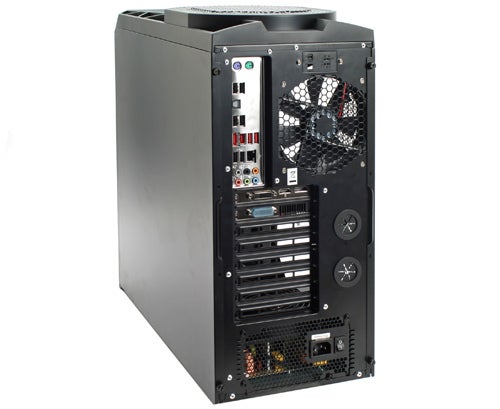
All the installed fans feature washable air filters, and can be set to Low, Medium or High speeds, using an inconspicuous dial for the front ones and switches for the top and rear. When set to Low the fans provide plenty of cooling for this PC while keeping noise levels down to a pleasantly unobtrusive hum.
As far as connectivity goes, the Nine Hundred Two offers eSATA and twin USB ports as well as unmarked metal headphone and microphone jacks at the front between the small reset and large power buttons.
Around the back, meanwhile, we have mouse and keyboard PS2 ports, eight USB ports, optical digital and six analogue audio outputs, a Gigabit Ethernet port and eSATA plus FireWire connections. The Radeon 5870 graphics card supplies twin DVI, HDMI and DisplayPort, rounding off a very comprehensive selection.
One of the Nine Hundred Two’s three 5.25in drive bays is filled by a Samsung Super-WriteMaster SATA LightScribe DVD-Rewriter that matches the case’s styling nicely, and it’s worth noting that DinoPC offer an upgrade to a six-speed Blu-ray drive for only £42.20, which is cheaper than most of its rivals.
Opening the case up is easily achieved by removing two thumb-screws, revealing a spacious and neat interior. Unfortunately there are no tool-free systems in this case and the drive cages are not rotated for easier access, though at least thumb-screws are provided to secure drives.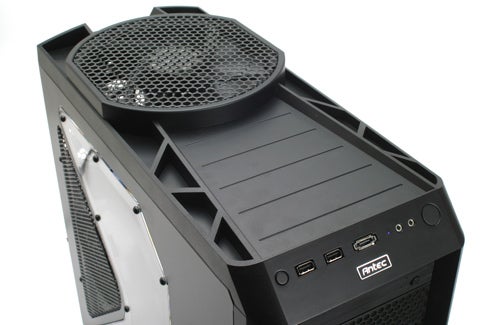
Powering the i7-Osaurus is a 700W non-modular OCZ PSU, which with its plain matte black finish blends perfectly with the case’s interior. Despite the lack of modularity, DinoPC has used black Velcro cable-tidies to good effect and routed all spare cables out of sight under the motherboard and behind the drive cages, meaning it’s still reasonably tidy. The assembler definitely deserves credit for putting even more work into this area than we usually see.
The Asus motherboard is immediately noticeable thanks to its attractive styling. Basically, what we have here is the non-deluxe version of the award-winning Asus P7P55D Deluxe, with fewer features and a somewhat different layout but the same aesthetics and basic characteristics. Visually its blue tones clash harshly with the red shroud of the Radeon graphics card, but as the Radeon HD 5870 is pretty much the most powerful single-chip graphics card around, we won’t complain too much about such a minor consideration. 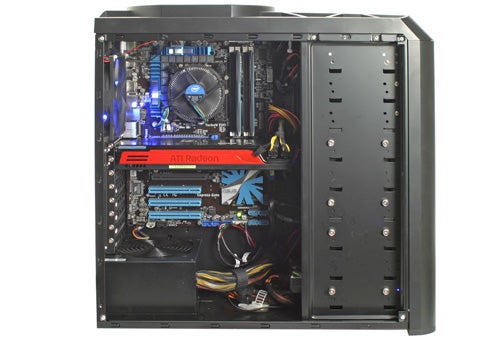
Three PCI slots should be plenty for anyone, though we’d rather have had a few more PCIe ones, especially since the 5870’s shroud obscures one of the two PCI Express x1 slots. As with every other P55-based motherboard we’ve looked at the second PCIe x16 slot only offers 8x in CrossFire or SLI, so you might want to think twice about adding a second 5870 at a later date. If you do want to go the CrossFire route with graphics this powerful, a X58 board is still the way to go – for now.
Processing duties for the i7-Osaurus are handled by a very capable Core i7 860 running at 2.80GHz, though with Intel’s Turbo mode and multithreading enabled it can give more performance than its gigahertz rating would suggest. Mind you, in most scenarios a Core i5 is more than up to the task of running any game at full tilt, but the i7 860 is a good compromise between price and performance.
At this stage it’s worth noting that despite the excellent case ventilation, you won’t get too much overclocking from the CPU as one of the few real price concessions DinoPC has made with the i7-Osaurus is that it has decided to stick with the stock Intel cooler. However, while the company doesn’t offer water-cooling solutions on this specific configuration, you can upgrade to a CoolerMaster Hyper TX3 or V8 fan for £23.45 or £56.59 respectively. 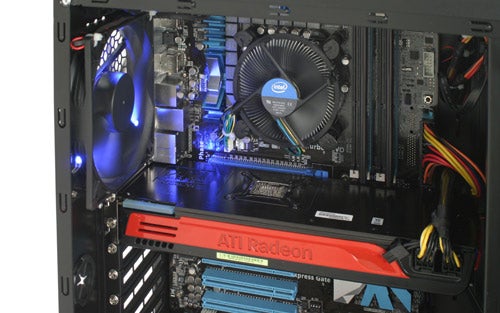
Backing up the CPU is 4GB of speedy 1,600MHz Corsair XMS3 DDR3 RAM, which will be plenty for most. If it isn’t enough for you though, there’s always the option to upgrade to 8GB for £84.10 when configuring the PC – or you can just add some DIMMs yourself at a later date, which is probably the cheaper alternative.
Taking care of storage is a single-partition 1TB 7,200rpm Samsung hard drive, leaving six 3.5in drive bays free. DinoPC offers plenty of options here, allowing you to downgrade to a 160GB drive or up to a 2TB one (for £162.56), not to mention the option of 10,000rpm 300GB WD VelociRaptors.
Any hardware-savvy gamer should know that it’s the graphics card that really makes or breaks a gaming machine. As already mentioned, the i7-Osaurus uses AMD/ATI’s latest powerhouse card, the Radeon HD 5870. While it’s not necessarily the best value proposition around, with that honour going to its cheaper, award-winning Radeon HD 5850 sibling, it’s the most powerful single-chip graphics card around. 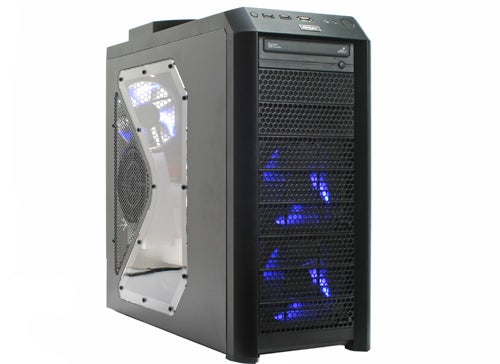
Not only does it wipe the floor with the competition in current titles, but AMD’s 5800 series is – for now – the only hardware that can handle DirectX11. Though DinoPC has stuck with Windows Vista, we would most definitely recommend upgrading to Windows 7 Home Premium for the mere £1.30 that privilege demands. Either OS will (eventually) support DirectX11 and run the same games, but as you might glean from our review, Windows 7 is simply the superior experience in every other way.
Aside from Windows we’re dealing with a clean install here, just the way most gamers prefer it. Unlike some assemblers, DinoPC even lets you forego an OS altogether, saving you £83.89 (a great option if you had the foresight to nab an extra copy of 7 at its pre-order price of £45 a few months back).
Enough with the hardware and software analysis though, it’s time to check out whether this PC is a devil or a dinosaur when it comes to actual games. Starting off with Call of Duty 4, the £1,000 i7-Osaurus outperformed the £1700 PC-Specialist Vortex i950 Gaming PC (with its nVidia GTX 295 dual-chip graphics card) as long as anti-aliasing (AA) was left off – scoring an average of 171 frames per second (fps) at 1,920 x 1,200 with details turned up to maximum, compared to 156fps for the more expensive machine. Incidentally it also achieved a record-breaking maximum of 300fps with (AA) turned off. 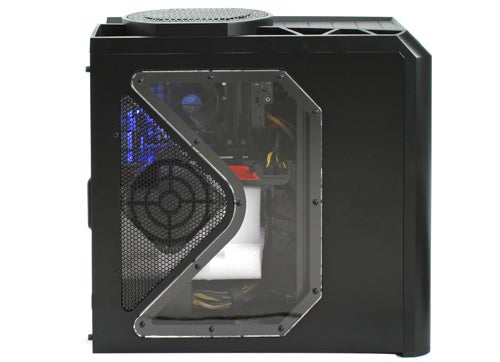
Crysis is usually where heads start rolling though, both in the game and the real world. Indeed, here DinoPC’s system failed to beat the mighty Vortex on any level. The good news is that even at 1,920 x 1,200 with details cranked up to Very High, it still managed a playable 28fps, trailing PC Specialist’s machine by only two frames. Considering the price, heat and power differences, not to mention the extra DirectX 11 future-proofing the 5870 provides, this is impressive.
So does it mean that this dinosaur should be taken permanently off the extinction list? Well, yes, actually. DinoPC has intelligently gone for the best graphics card its budget of under £1,000 would allow, though overall it’s not necessarily the most well-balanced configuration we’ve come across. If you want to save a little money, for example, you could go for a Core i5 CPU and 1,333Mhz RAM, which after adding on Windows 7 would come to £891.95. 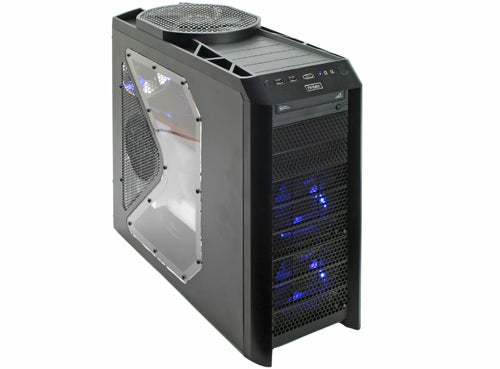
If you don’t mind slightly less graphics grunt, meanwhile, downgrading to a Radeon HD 5850 takes that down to £770.85 while it should maintain game-destroying performance in all but the most intensive titles. Still, the specifications that the i7-Osaurus offers would set you back around £1,200 from many assemblers, so it’s definitely decent value as-is. Also, DinoPC has a price-matching scheme in place, so if you find a better deal elsewhere the company will try to match it.
Verdict
A well-built machine with an appealing mix of components, including the most powerful single-chip graphics card on the planet, DinoPC’s i7-Osaurus presents a good choice for under a grand.
The review specification can be found here.
Addendum: Unfortunately the Asus P7P55D motherboard used in this PC does not support CrossFire 8x/8x as stated in the review. Unlike the Deluxe version it only allows 16x/4x. However, this does not affect the scores as the DinoPC is already fitted with the most powerful single-chip graphics card available (making future upgrades less likely) and still represents excellent value.
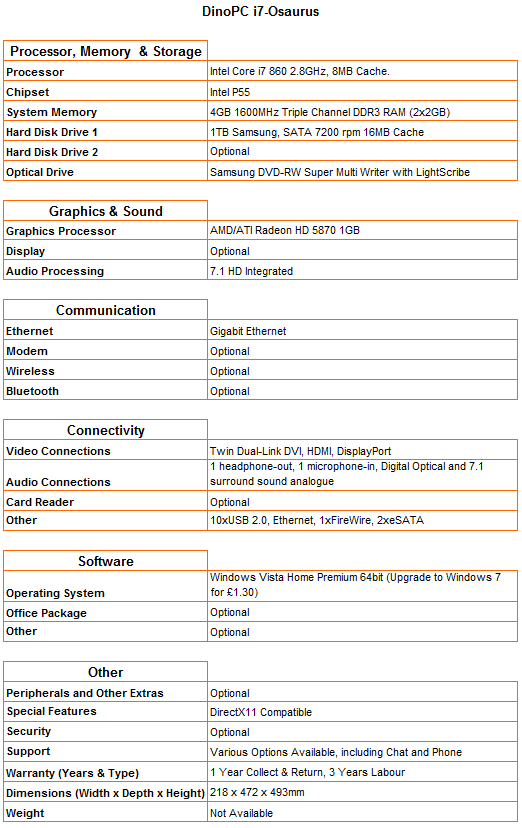
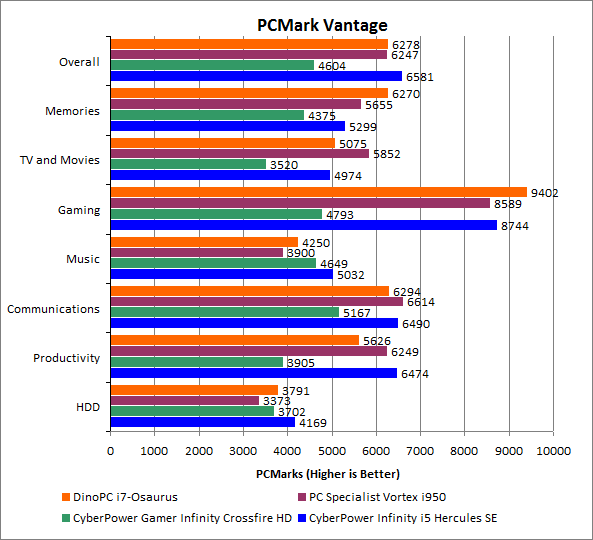
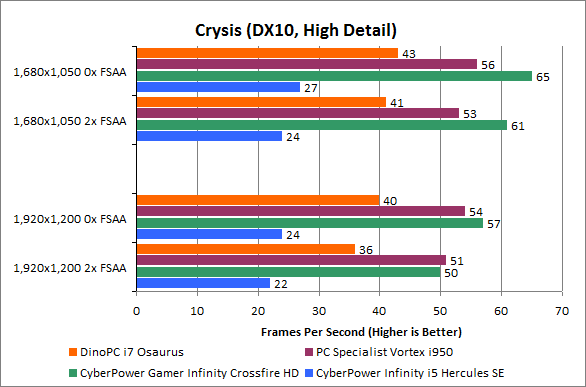
Keep in mind when comparing the Crysis results that we now run a more intensive test, where compared to the CyberPower Infinity CrossFire our i7-Osaurus only lags by about 1-4 frames. At 1,680 x 1,050 for example, the DinoPC machine would have scored 64fps compared to the older machine’s 65fps in the same test.
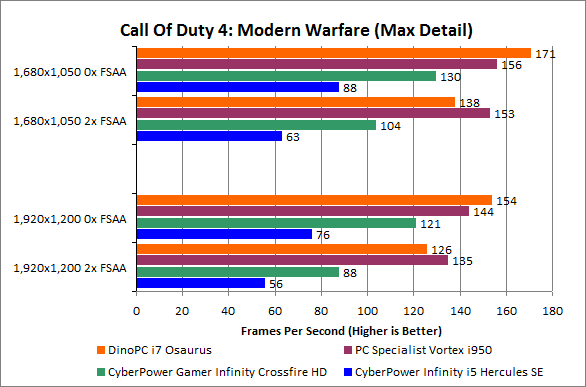
Trusted Score
Score in detail
-
Value 8
-
Features 9
-
Performance 9
-
Design 8

